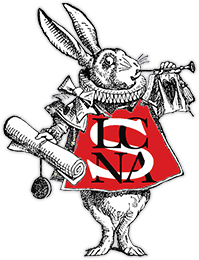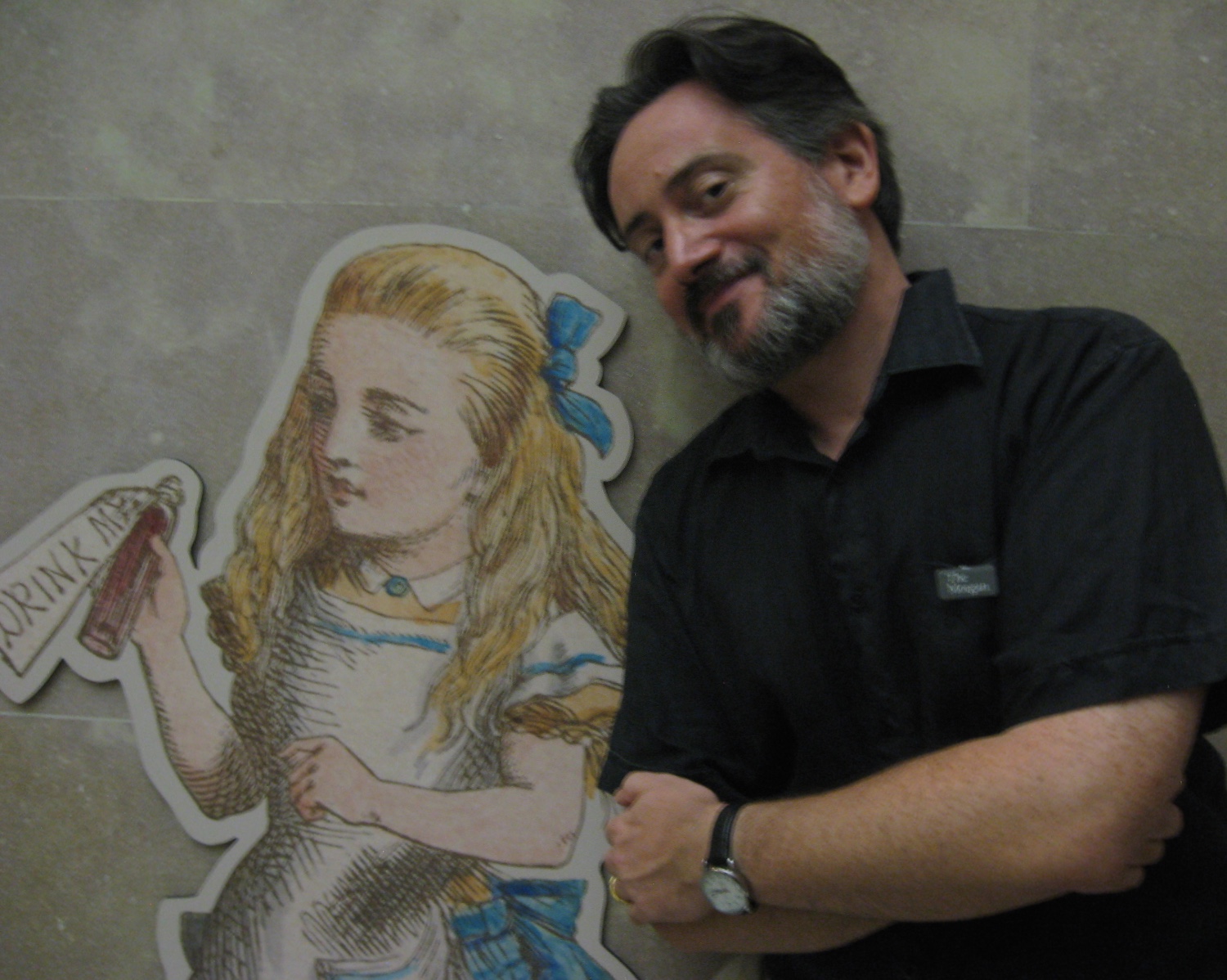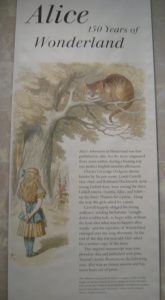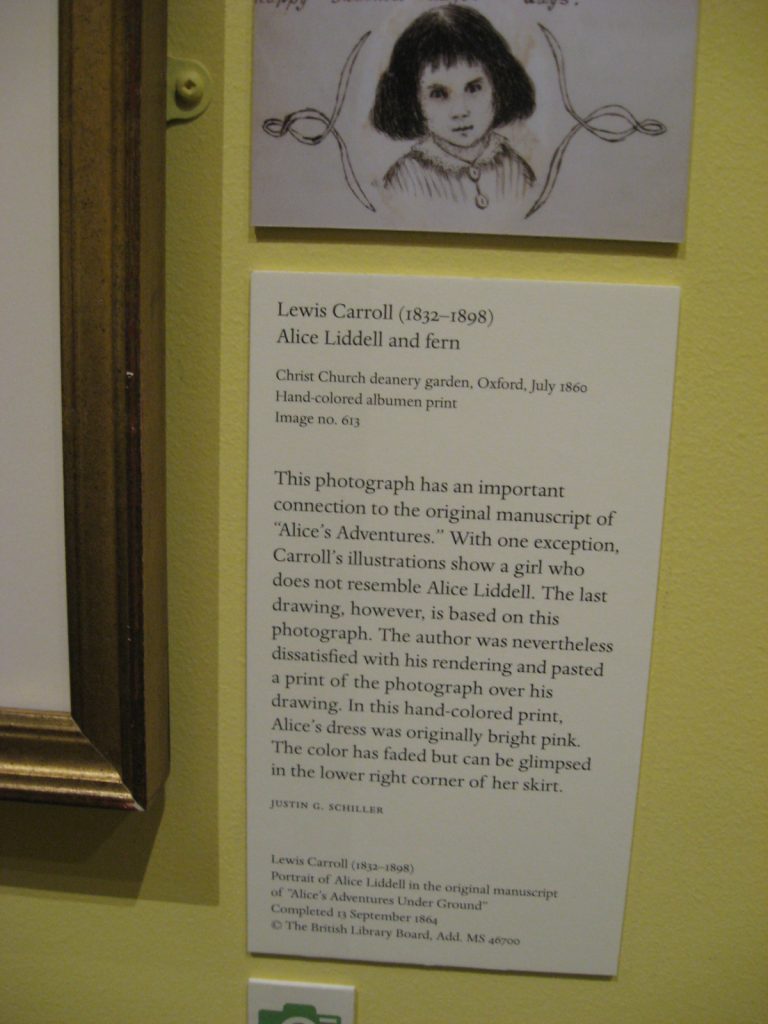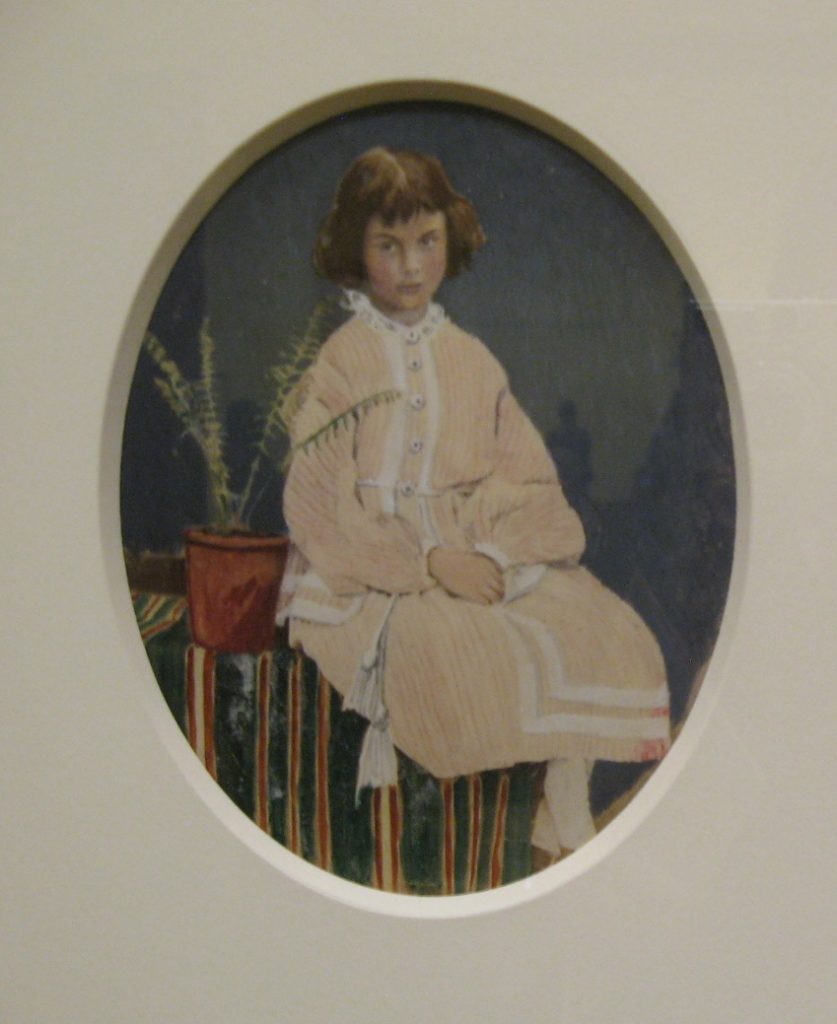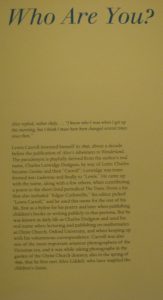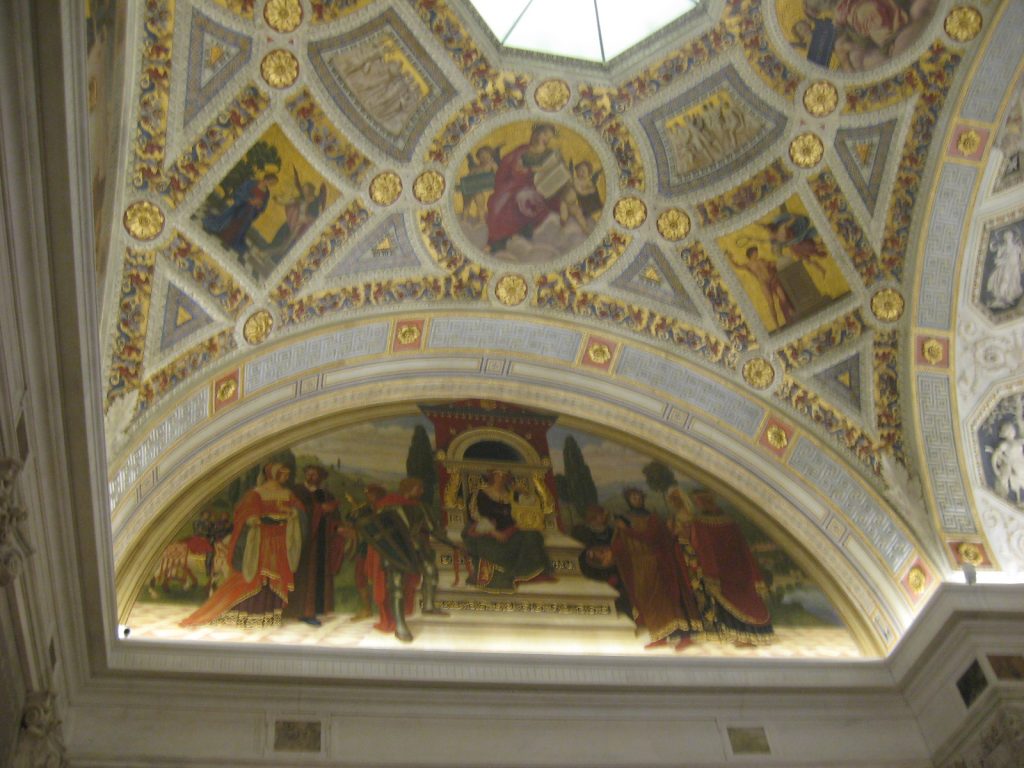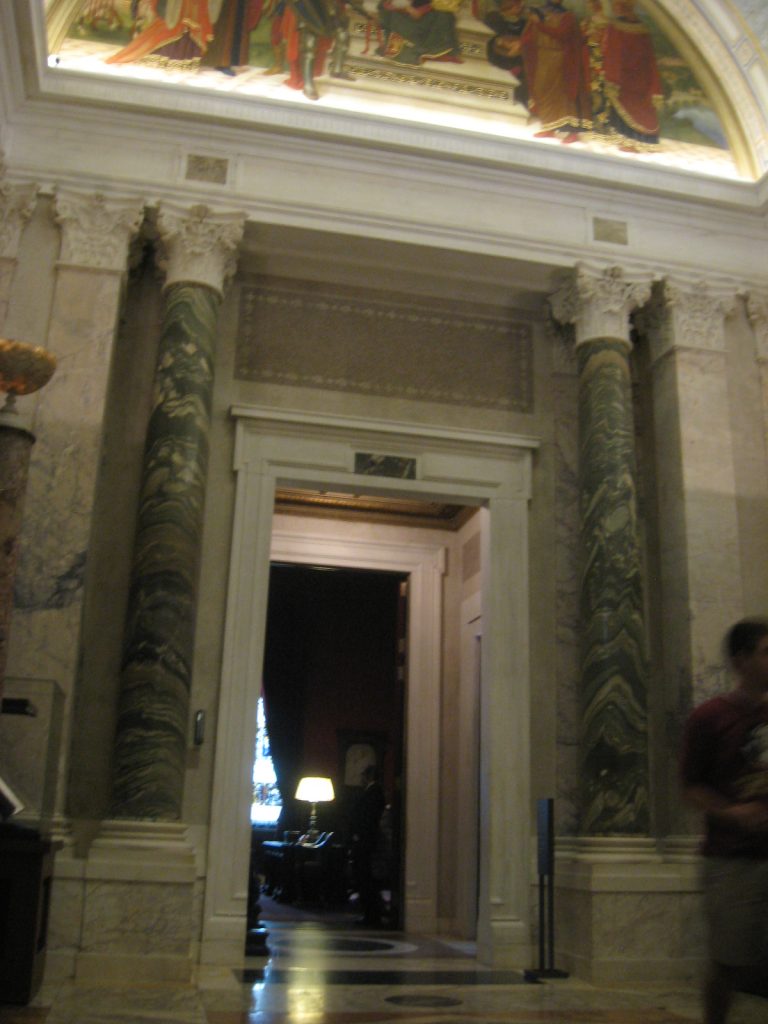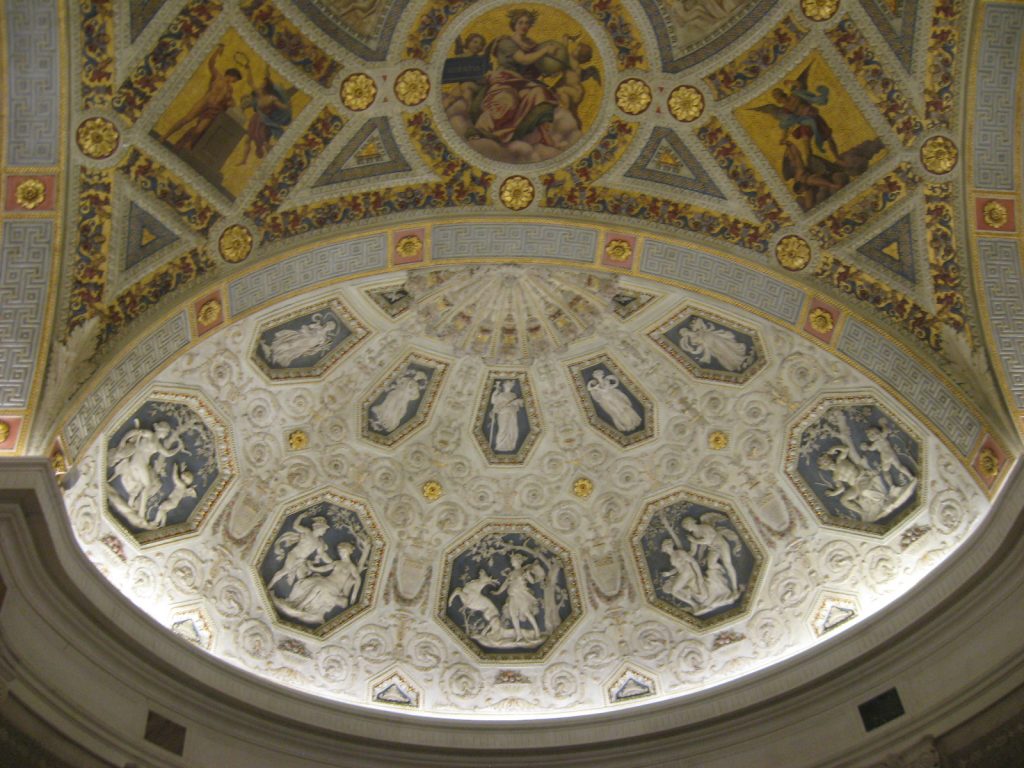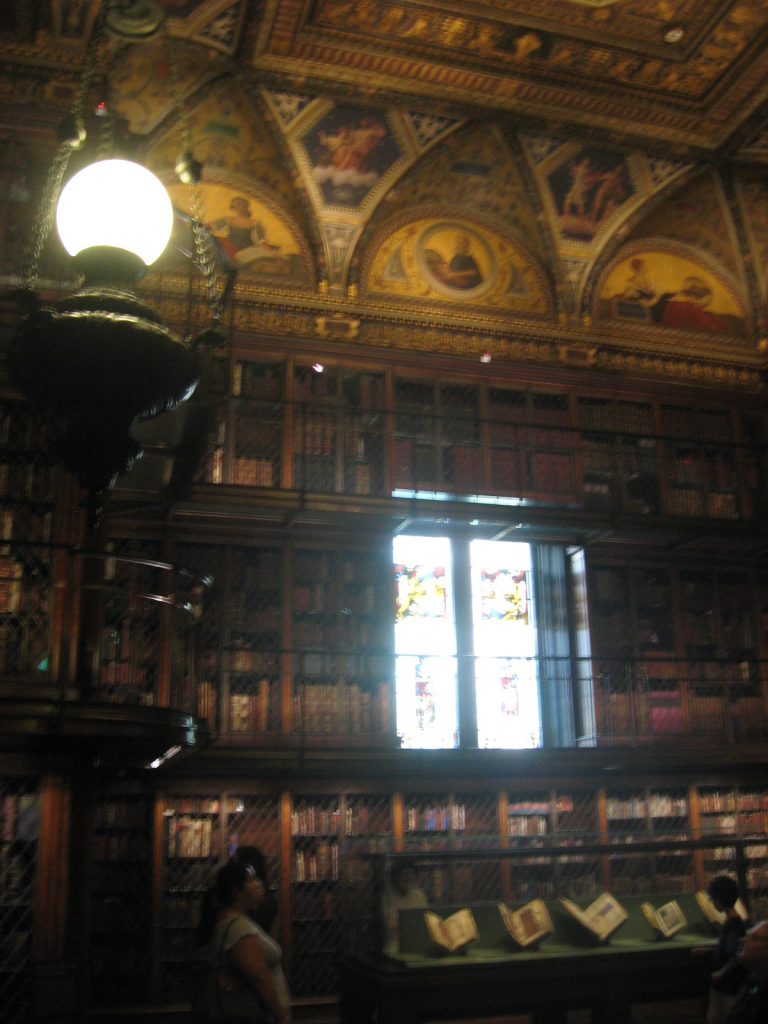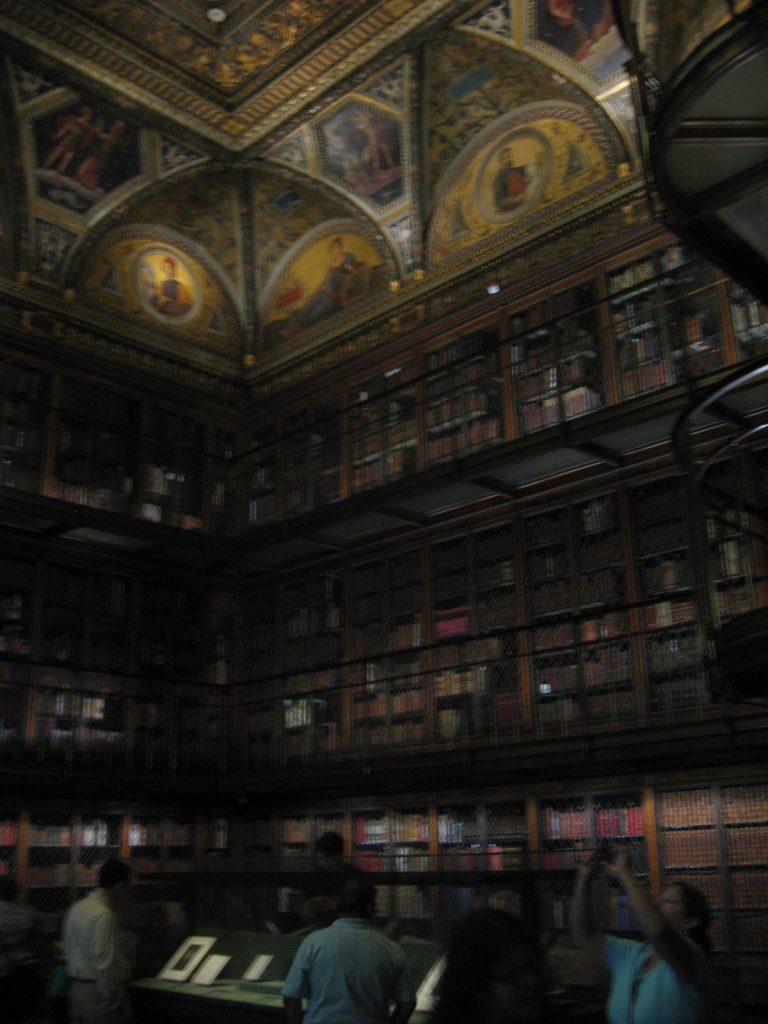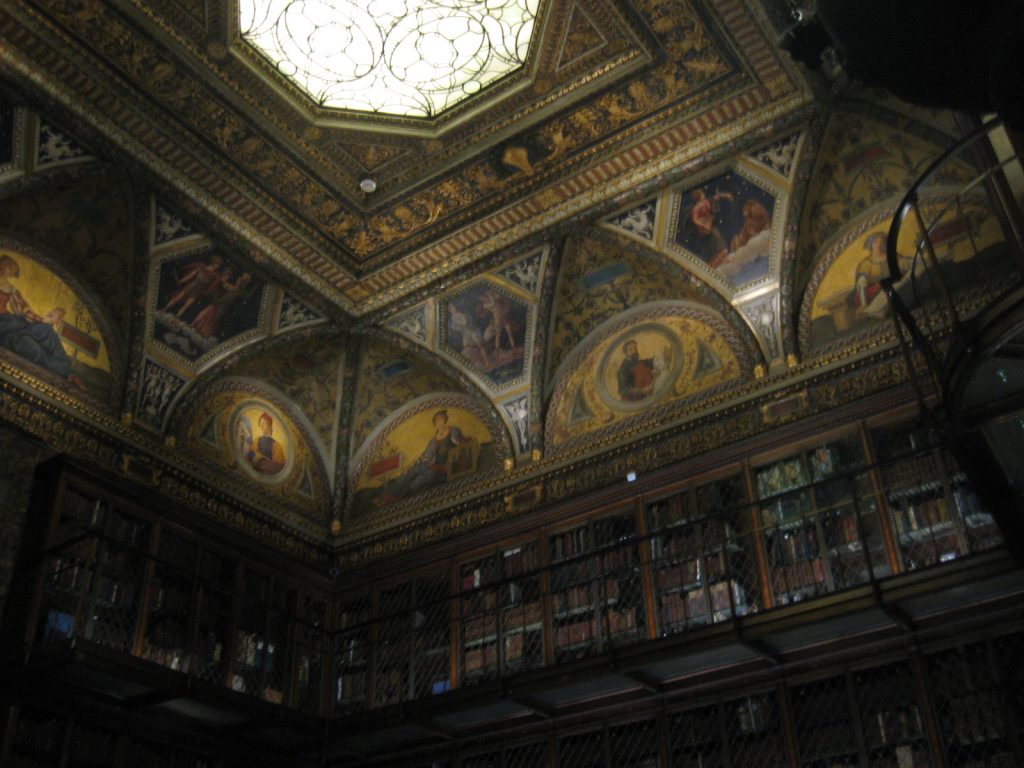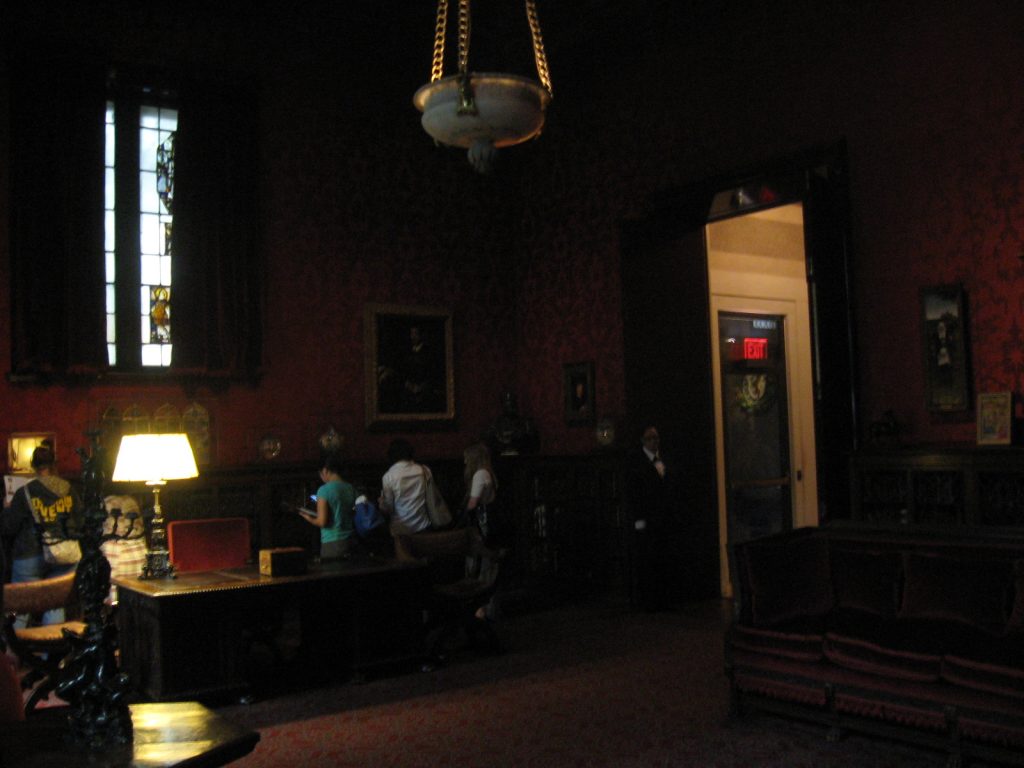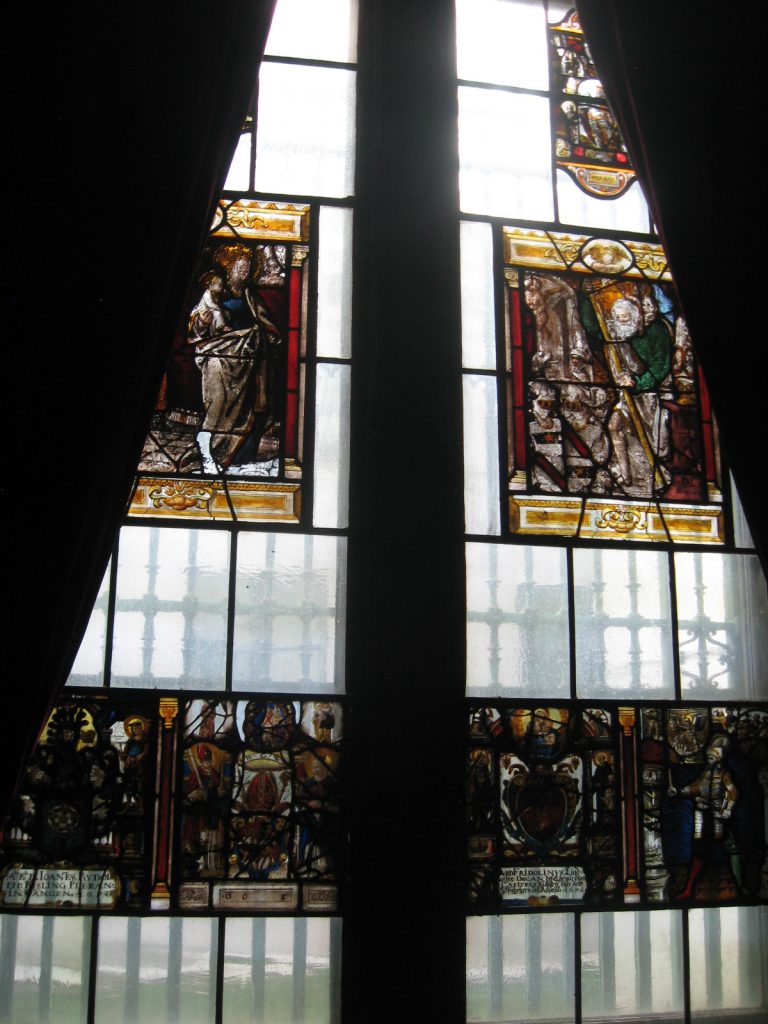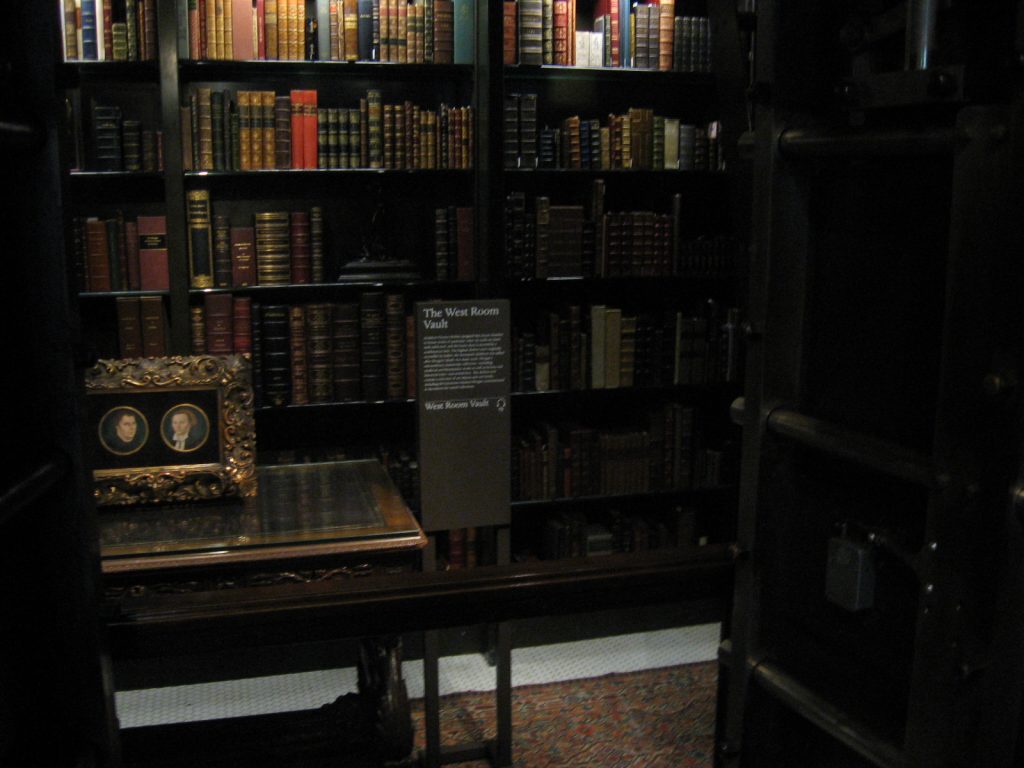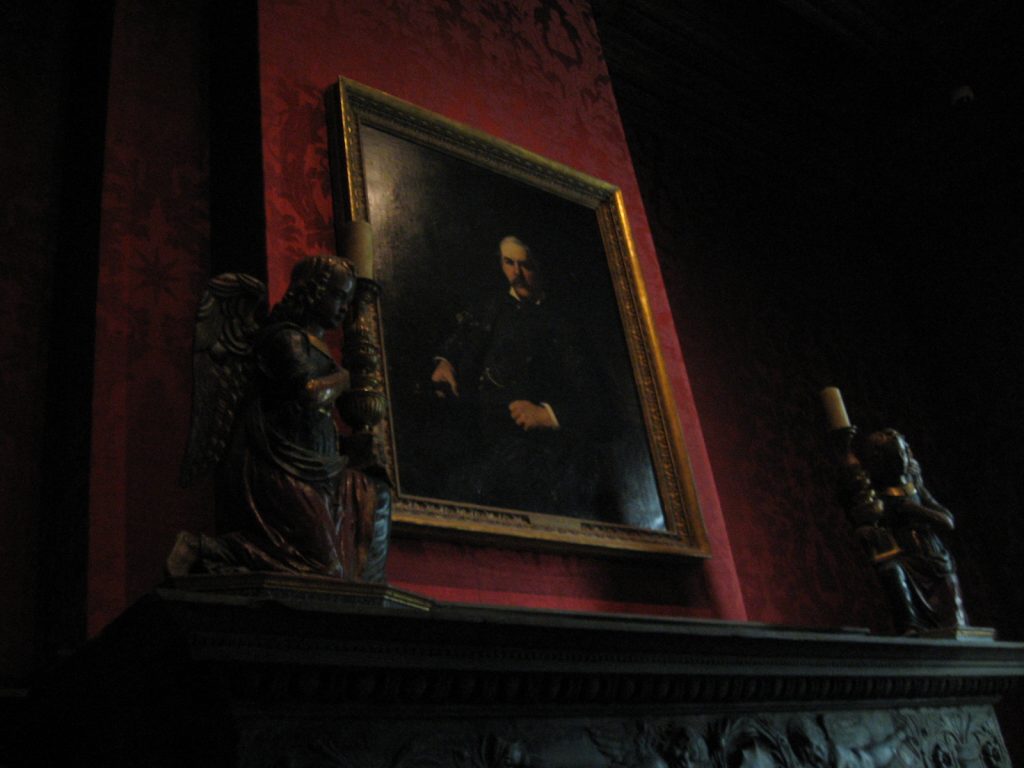from Notes from a Composer
personal musings on music, theater and a life in the arts by Danny Ashkenasi
DANNY and KELLY go see ALICE at THE MORGAN
August 12, 2015
by Danny Ashkenasi
Yesterday my Speakeasy co-producer Kelly Aliano and I went to The Morgan museum to take in their Alice – 150 Years of Wonderland exhibit, and tour the ground floor of the magnate’s palatial home and library too. As Lewis Carroll’s Alice books are such a big part of my musical Speakeasy – the Adventures of John and Jane Allison in the Wonderland, it seemed very apropos to check out this exhibit and share some impressions on this blog. Photography was allowed but limited only to those items that are part of the Morgan collection and not on loan.
We joined a tour in progress. The volunteer guide regaled us with the story of how Carroll, who initially independently financed the publishing of his books, considered the first press run not up to his exacting standards. So a new edition was produced at great expense. The “spoiled” books were not scrapped, however, but were shipped out for sale in the US market. I guess what wasn’t good enough for home consumption was just fine for the uncouth Yankees.
The exhibit focuses heavily on John Tenniel’s original illustrations, which in the guide’s (and my humble) opinion are the standard against which all future illustrations are (usually unfavorably) measured. John Tenniel, who lived to be 94(!), drew only in pencil, so any ink or colored in version of his work would be a copy, not necessarily a forgery but often mistakenly attributed to Tenniel. For “Alice’s Adventures in Wonderland” Carroll meticulously pre-planned subject and lay-out of all illustrations, and drew many himself. He was unsatisfied with the quality of his own work, and thus turned to Tenniel. When Carroll hired Tenniel to illustrate the second Alice book “Through the Looking Glass”, Carroll had so much confidence in Tenniel’s work that he gave the artist free reign to choose and design the illustrations. Carroll even excised a chapter called “The Wasp in the Wig”, when Tenniel insisted it was not possible to illustrate such a thing.
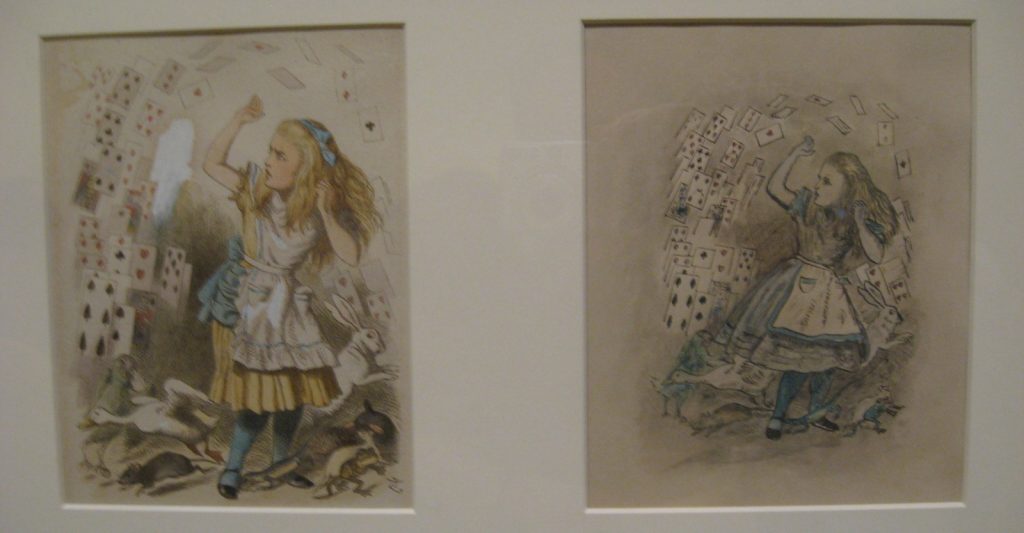
A highlight of the exhibit was the screening of a surviving print of a 1903 silent movie short of Alice in Wonderland. Very few movies of that era survive, so this is something special, especially considering that it shows that certain camera tricks and special effects were already in use so early in film making history (the screen picture in The Morgan is brighter than this YouTube embed. The shot where Alice “shrinks” or “grows” shows the background against which she is changing size more clearly, for example):
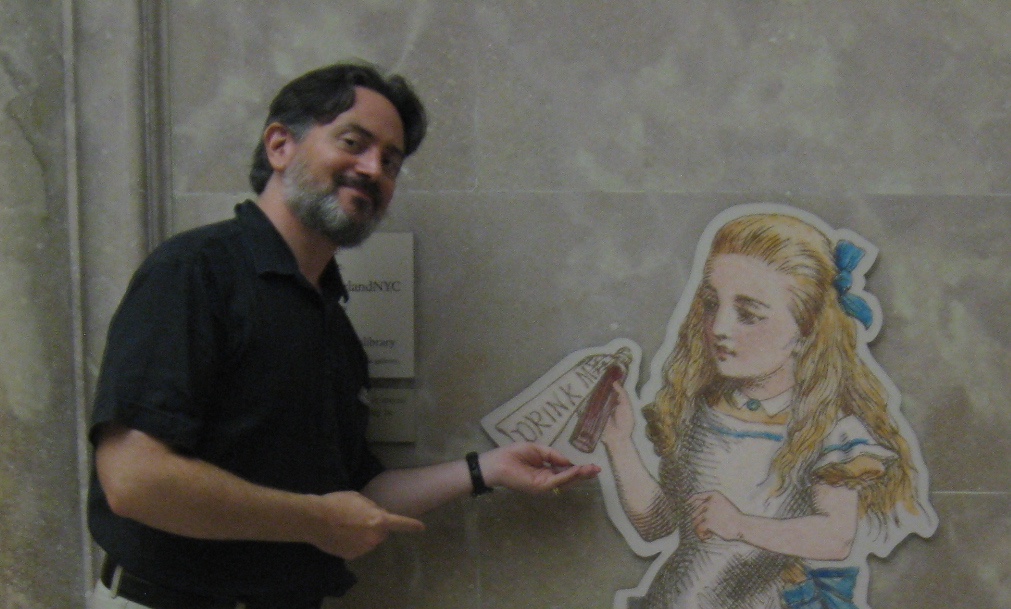
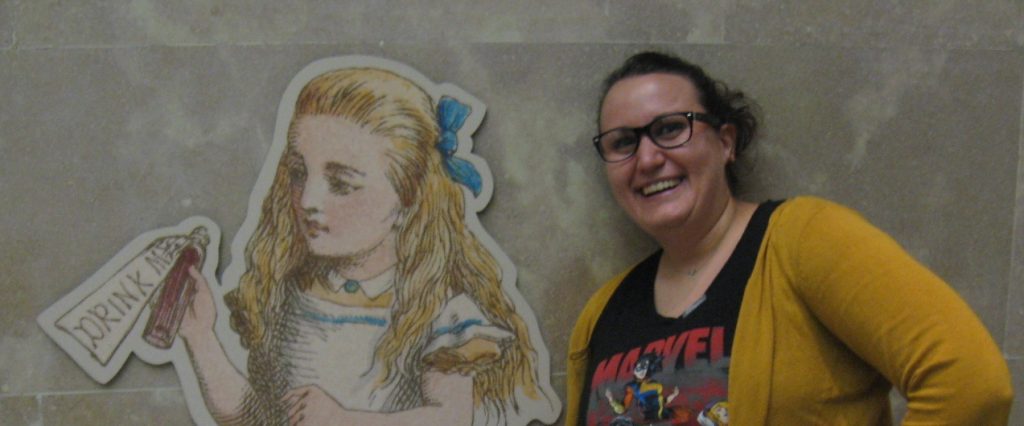
The Guide solicited readings from the attendees, which is how I was roped into reciting the Jabberwocky in full classical actor mode, after I had heedlessly mumbled out loud that it is a rather difficult poem to sight-read:
‘Twas brillig, and the slithy toves
Did gyre and gimble in the wabe:
All mimsy were the borogoves
And the mome raths outgrabe
….
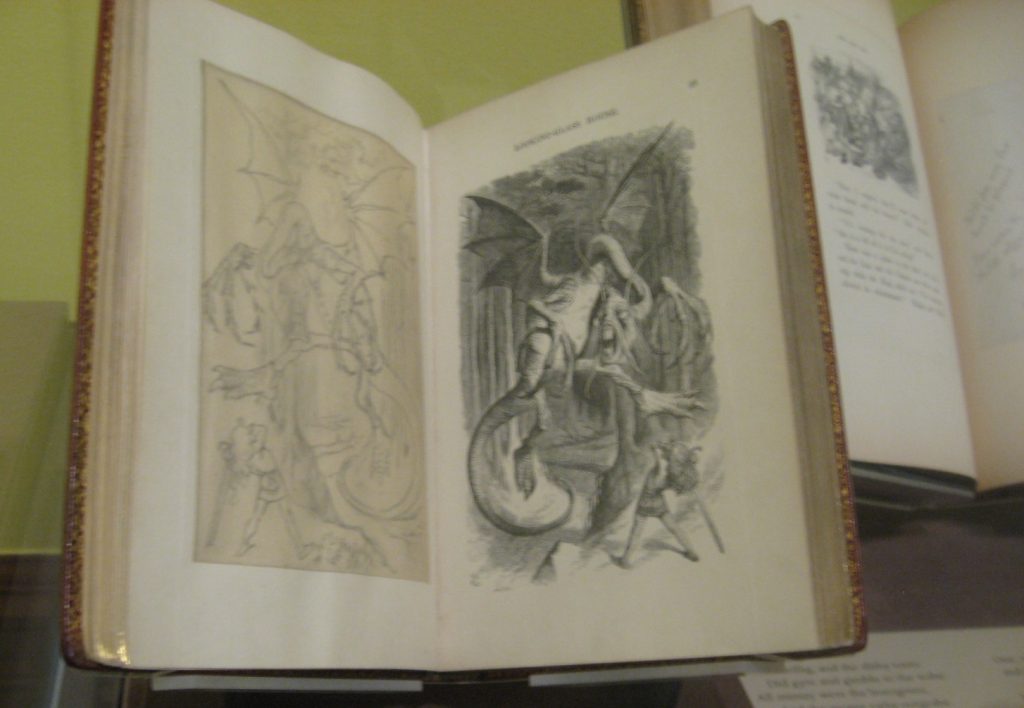
Luckily my classical training (cough cough) stood me in good stead and I managed a credible performance. The guide talked about how the poem has been translated into several languages. One attendee said that should be easy, since you wouldn’t have to translate the “nonsense” words but simply “copy them”. But I didn’t think it would be so easy, although I kept my thoughts to myself. The sounds of letters don’t translate directly from language to language, and even so don’t necessarily evoke the same feelings from language to language, so some thought would have to be put into effectively translating even a nonsense word. And a google search of the German version, called “Der Jammerwoch”, bears that out.
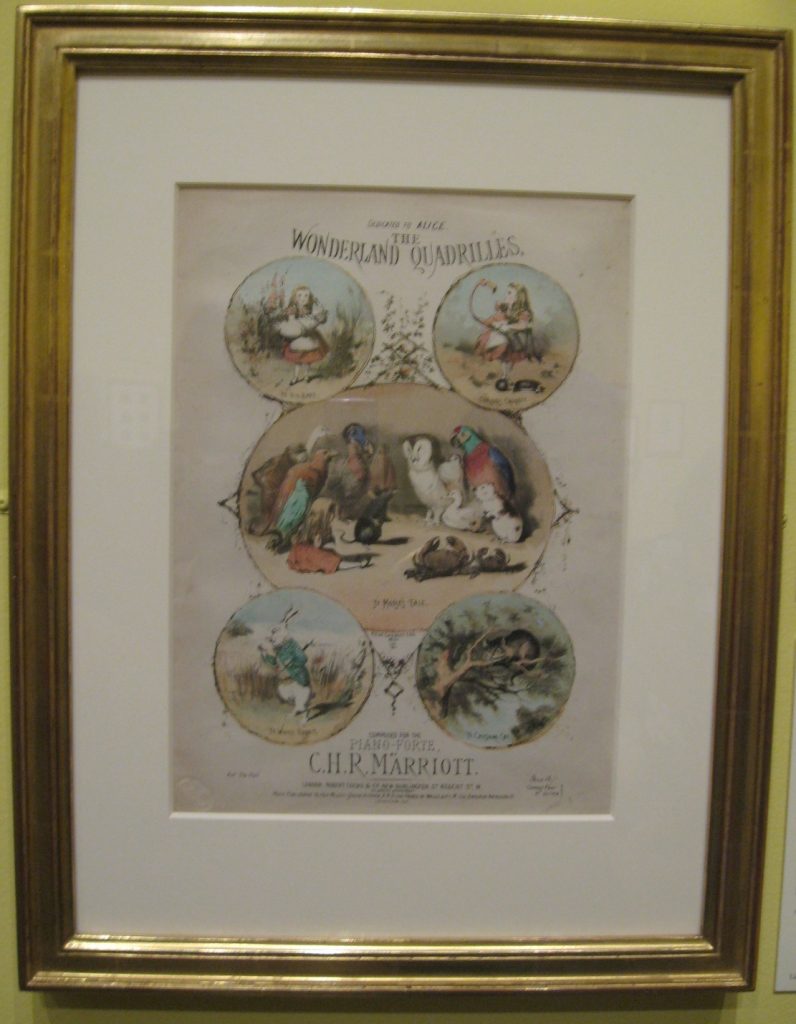
Identity, unfixed, mutable, confounding, its loss or the changing ways one is perceived by others and by oneself, is a big part of Carroll’s Alice books.
This theme is carried over into the musical “Speakeasy”.
Much like Alice in Wonderland and Through the Looking Glass, Speakeasy’s John and Jane Allison find themselves changing in subtle and alarming ways. Who and what they are is questioned and challenged repeatedly, by others and even themselves. John, like Alice, even literally forgets himself, falling into a kind of identity amnesia at one point.
The name Lewis Carroll itself is an identity that the author, born Charles Lutwidge Dodgson, created (see right).
There is so much more to see at the Morgan’s Alice exhibit, and so much more for me to say about Alice and Speakeasy. For now, look forward to more articles and enjoy the ones already posted.
And to close, below are some images from the main part of The Morgan: ground floor of J.P. Morgan’s wildly opulent home with its cathedral parlor, massive library, and the richly musty, dark study.
The Parlor:
The Library:
The Study:
